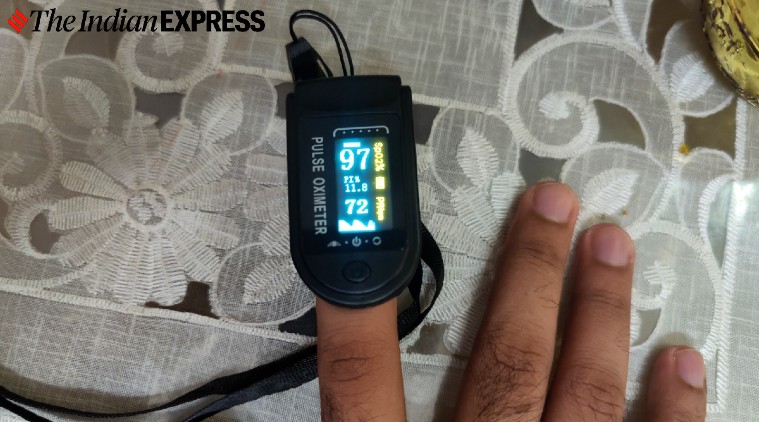Most of us understand that we need oxygen permanently. (Some of you may discover this area a little also standard. Because situation, to skip this brief section, click this web link to go to next section Physical residential properties utilized in pulse oximetry) Oxygen gets in the lungs and also then is passed on right into blood.
The primary method oxygen is carried in our blood is by means of hemoglobin. The oxygen particles get into these cars and take a trip around the body till they reach their destination.
The hemoglobin with oxygen, we will certainly call oxygenated hemoglobin (oxy Hb). Oxygen saturation simply refers to the percent of the readily available hemoglobin that brings oxygen. The oxygen saturation is for that reason 0 %.
The Ultimate Guide To Oxygen Level Meter
Similarly for 75 % And also certainly, when all the Hb have oxygen, the saturation is 100 % So in recap, oxygen saturation tells you the percentage of the overall hemoglobin that is lugging oxygen. Physical homes made use of in pulse oximetry Pulse oximetry uses light to exercise oxygen saturation.
If a finger is put in between the source of light and also the light detector, the light will now have to go through the finger to reach the detector. Part of the light will certainly be soaked up by the finger and the component not taken in gets to the light detector. The quantity of light that is taken in by the finger depends on lots of physical residential properties and these homes are utilized by the pulse oximeter to compute the oxygen saturation.
2. All the above will certainly be clarified in the next sections: The physical residential or commercial properties that a pulse oximeter utilizes will certainly be explained utilizing the probe shown listed below.
Oxygen Level Tester Can Be Fun For Everyone

Over the finger are the light resources that discharge light. In the finger is an artery which carries the blood the pulse oximeter has an interest in and a capillary where the blood leaves the finger. Below the finger is the light detector. Physical property No. 1: Amount of light soaked up is proportional to the focus of the light absorbing material Hemoglobin (Hb) takes in light.
In the diagram below, the blood vessels in both fingers have the very same diameter. One blood vessel has a low Hb concentration (i. e. low number of Hb in each device quantity of blood) as well as the other blood vessel has a high Hb concentration (i. e. high number of Hb in each unit volume of blood).
This building is described in a regulation in physics called "Beer's Legislation". Beer's Legislation: Quantity of light taken in is proportional to the focus of the light soaking up material By determining how much light reaches the light detector, the pulse oximeter knows just how much light has been soaked up. More the Hb in the finger, even more is the light taken in.
Fascination About Sats Monitor
2: Amount of light absorbed is symmetrical to the length of the light path. Look at both fingers shown below. Both arteries have the same focus (exact same Hb per system area, blue square) However, the artery on right is wider than the one on the left. The light emitted from the resource needs to take a trip via the artery.
Though the concentration of Hb is the exact same in both arteries, the light meets more Hb in the larger artery, considering that it takes a trip in a much longer path. Consequently, longer the path the light has to take a trip, a lot more is the light soaked up. This residential property is described in a regulation in physics called "Lambert's Legislation".
Physical home No. 3: oxyhemoglobin takes in more infrared light than red light & deoxyhemoglobin soaks up more traffic signal than infrared light (this is clarified listed below!) We have seen just how focus and light course influence the absorbance of light. In addition to these, the pulse oximeter utilizes one more important property to compute oxygen saturation.
Oximeter Test Fundamentals Explained
All light is composed of waves. Light wavelengths are very short, and the device of measurement is nanometer (nm) (1 meter = 1,000,000,000 nanometers!).
About the author